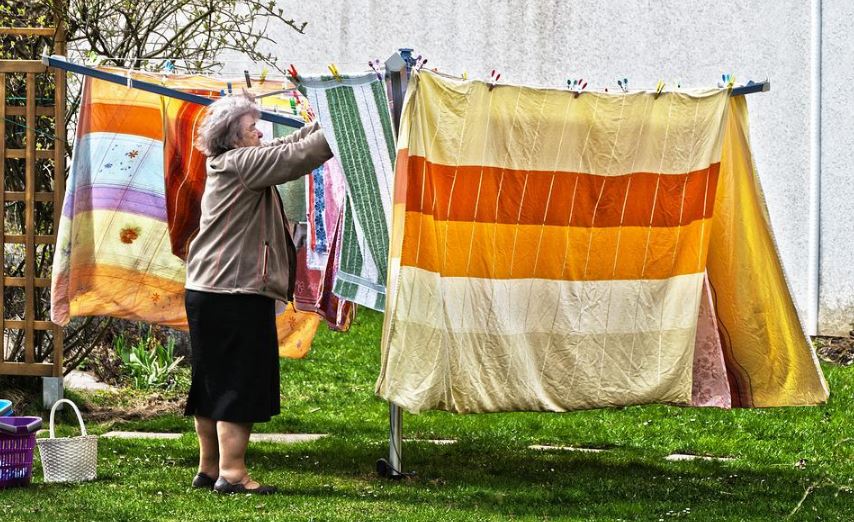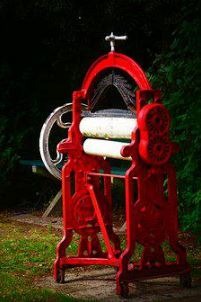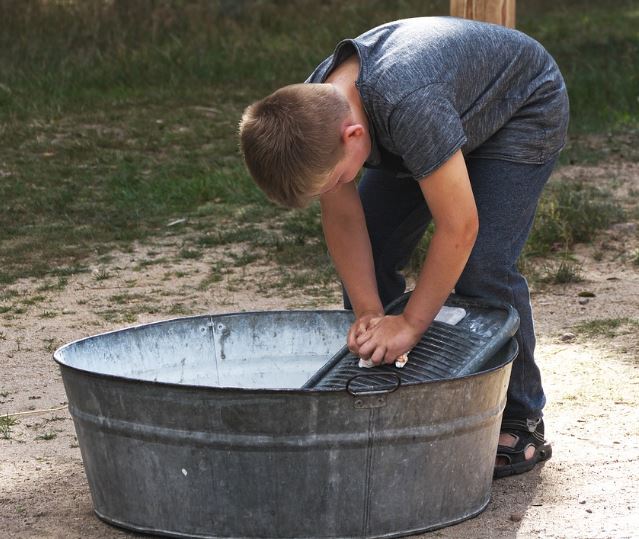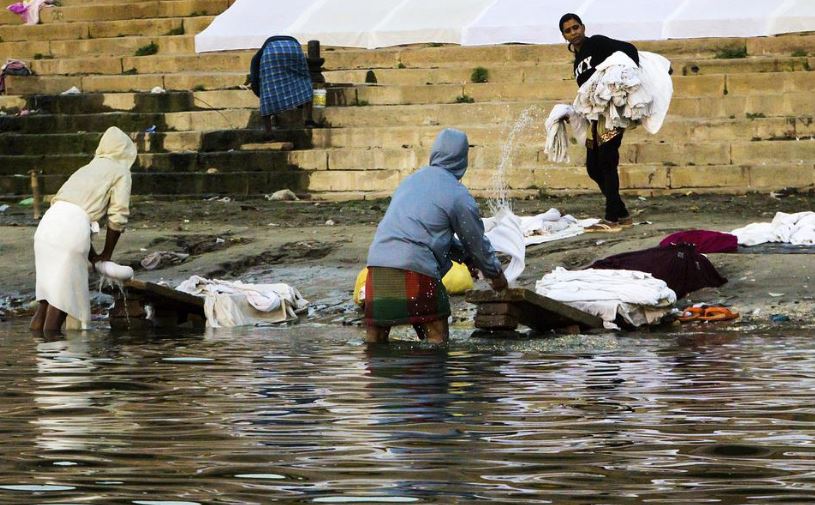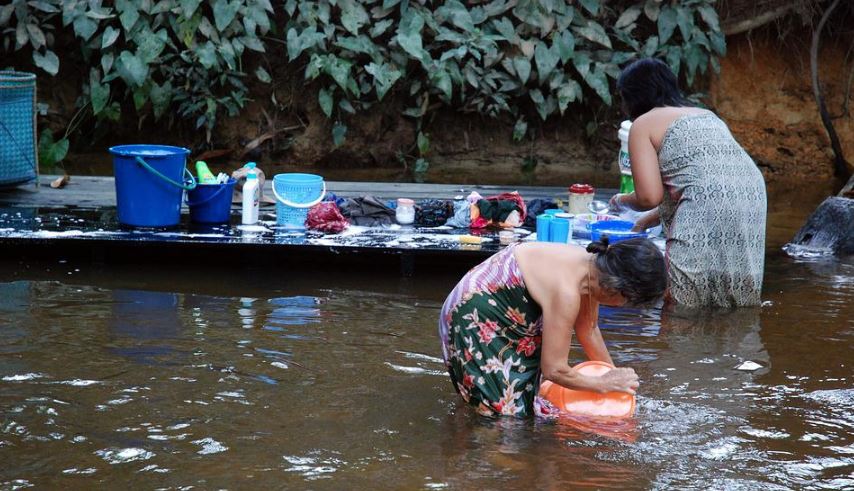Performing laundry without electricity requires multiple steps. Consider how you launder your clothing at home using electricity; you must wash and dry them. You will need a plan for every process.
In order to be prepared for washing clothing without electricity, you will need to examine a number of different factors. For the most of these ways, you’ll need a variety of materials, and you’ll also need to consider the kind of laundry soaps you’ll require.
Here are several techniques for washing clothing without electricity:
1. How Grandmother Used to Do It
If you can recall a time before washing machines were ubiquitous, you probably recall your grandmother washing clothes in the garden. She would fill a galvanized tub with hot, soapy water, dip the garments in the tub, use a washboard to remove the most stubborn stains, and then use a manual wringer to remove all of the water from the garments.
Then they headed to the clothesline. This method of washing garments is still viable. The amazing thing about this way of washing clothes is that it has a low initial investment. If you decide you like it, GREAT! This method also provides substantial workout. You will quickly realize that washing clothing off the grid is a laborious task. However, you will find that your clothing become significantly cleaner and smell nicer.
2. The June Cleaver Method
In modern times, the internet refers to this as the ‘Amish Way,’ yet it reminds me too much of June Cleaver not to mention her. I will discuss utilizing a wringer washer. June Cleaver plugged hers in into her residence. The Amish are currently employing wringer washers powered by generators.
You can purchase a used wringer washer through online auctions and local antique shops. You may be astonished to learn that many people still hide them in their basements and are eager to dispose of them. The point I’m trying to make is that you can still get them easily. If you cannot find a used one, you can find a brand-new one here. Don’t let the price tag frighten you, because they will endure so long that your great-great-grandchild will likely be able to use it when he or she has a home of their own.
The use of wringer washers is quite simple. You fill them with water, place your clothing inside, and allow the machine to perform the agitation. After that, you put the garments through the automatic wringer into the rinse water. Then, pass the washed garments through the wringer a second time to remove excess water, and hang them on the line. The wringer washer is likely the simplest method for washing clothing off-grid.
3. Washtub and Dolly Sticks
This practice was prevalent seventy years ago, before washing and drying machines were generally accessible to the average family. It’s conceivable that your granny did her clothes in this manner!
A washtub is fairly self-explanatory, whereas dolly sticks are no longer commonly used. Dolly sticks are essentially huge broom-like tools with spools at the end that can be used to clean garments with force.
When using a washtub and dolly sticks, you will need to heat the water before to proceeding. Then, you must add whatever type of soap you are employing. Put your things in the hamper and go to work! Ensure that you have a designated area for rinsing your garments. In addition to using a sanitizer after rinsing them, you will also need to apply some sort of disinfectant.
Dolly sticks are used to assist in cleaning clothes, especially when using liquid soap. You should thoroughly water your garments, and if they are discolored or have tough areas, you should allow them to soak for a while.
Don’t worry if you don’t have a washtub and you need to wash clothing without electricity. You can wash your garments in any clean bucket or area where water can pool.
4. Washboard
Washboards are rather ubiquitous products, and in recent years they’ve really evolved into pieces that can be used for decoration. You won’t have any trouble using them, but you should be prepared for a good exercise. A washboard is a sort of board that is filled with edges of wood (or any other hard material), and it is used to wash clothes by applying direct force to the fabric. To aid in the process, you will also require a bucket of some kind or maybe a washbasin at the very least.
The bucket that you have should be filled with warm water, and while that is happening, the soap that you are utilizing should be allowed to dissolve. After you’ve put your garments in the washer, roll up your sleeves and check to see if they’ve received a sufficient amount of water as well.
After that, you will need to take each article of clothing and begin rubbing it along the washboard in its own individual motion. There aren’t many things that can be done to make this procedure simpler; all you can really do is put in some effort and get it done. Once that, you will need a separate bucket or space for rinsing your clothing in after you’ve finished washing them. Again, this is the step during which you should apply any sanitizers to your clothing that you are utilizing.
The use of a washboard is typical in many households. You don’t really need anything special save the board itself, and the board can even be used for something else, like as a decorative piece! Be careful if you want to try to conduct this method for more than one person at a time, even if it is an excellent way to strengthen your arms. If you wash each item separately, this could take a significant amount of time.
5. Mop Bucket
When I found out about this, I thought it was a stroke of brilliance. You need to get a brand new mop bucket that comes with a press. In principle, you should be able to use the bucket to wash your clothes. However, regardless of whether or not you want to wash your clothes in the bucket, you can use the mop press to remove excess water from your garments.
It would appear that hand-washing garments is on its way to becoming a forgotten art form. A talent that we do not believe will ever be necessary for us to acquire in our lifetime. Even if you have no intention of ever doing so, it is important to have this knowledge in the event that you are in a scenario where you do not have access to electricity.


